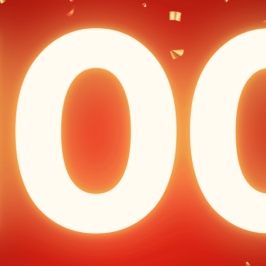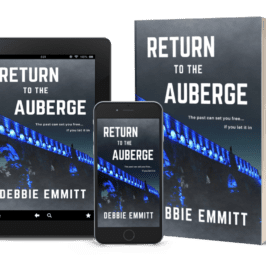
Knowing how to use an ellipsis can be confusing. A space before the ellipsis or not? Spaces in between the three dots or not? Fear not. This guide will tell you all you need to know.
The ellipsis (plural: ellipses) is an incredibly versatile bit of punctuation, typically used in fiction to show hesitation, omission or a pause, and in non-fiction to show a direct quote has been altered.
Depending on which style guide you’re following, an ellipsis can be written with or without spaces before, after or between the dots.
This article will show you when to use ellipses and how to write them. Let’s go!
What is an ellipsis?
An ellipsis is a punctuation mark consisting of three dots: … or . . .
The dots can be spaced or bunched up, or preceded/followed by a space or not, depending on style and placement in the text. Once you’ve decided on the approach you’d like to take, or if you’re following a particular style guide, be consistent throughout your document or manuscript.
If you’re following a style guide that spaces out the dots or uses a preceding space, like CMOS and MLA, remember to use non-breaking spaces between dots and before the first dot. (Option+Spacebar on a Mac, Ctrl+Shift+Spacebar on a Windows machine). This will prevent ellipses that may end up at the end of a line from breaking midway through. Any space after the ellipsis can be a normal space.
An experienced editor or proofreader can help you pick the ideal format for ellipses in your project and apply it consistently. They can also help you with non-breaking spaces in the right places (ooh, that rhymes!).
What’s the difference between an ellipsis, en dash and em dash?
Ellipses, en dashes and em dashes may, at first glance, share similar roles, but there are distinct differences between the three marks.
Appearance
Let’s get the obvious stuff out of the way. They look different:
- Ellipsis: … or . . .
- En dash: –
- Em dash: —
Use
The en dash has no crossover in use with the ellipsis. It is mostly used in number ranges, scores (e.g. Newcastle beat Liverpool 3–1), connection (e.g. London–Brighton train, work–life balance) and complex compound adjectives (e.g. the post–Cold War era).
The ellipsis and em dash represent different kinds of breaks in text. The em dash denotes an interruption; the ellipsis shows trailing off or hesitation. Lyss Maurer’s article on interrupted dialogue is a great resource that shows this difference.
The em dash never represents missing words; that’s the job of the ellipsis.

It’s a question of style
As I’ve already mentioned, how ellipses are presented depends on which style guide you’re adhering to.
Associated Press (AP)
AP style is used by most newspapers, magazines and other media outlets. It focuses on US English, but you can adapt the spelling and other elements to your version of English (UK, Canadian, Australian etc).
Ellipses in AP style are written as three unspaced dots, with a non-breaking space before and after the group ( … ). This style guide also advises retaining a period/full stop at the end of a preceding sentence before the ellipsis (. … ).
An ellipsis can be used to show omission in a direct quote, but, as with any of these styles, be careful not to alter the intended meaning with your omission. Don’t use ellipses at the start or end of direct quotes when using AP style, only in the middle. AP style doesn’t use square brackets around ellipses that have been added to denote omission.
American Psychological Association (APA)
APA is used for research papers in the social sciences, education and other fields. It uses ellipses to show a change to quoted material, such as an omission.
It allows either three dots with non-breaking spaces around each ( . . . ) or the ellipsis character with a space before and after ( … ).
If the quotation includes the end of one sentence and the beginning of another, with omitted material in between, use a period plus an ellipsis (. … or . . . . ).
When following APA style, don’t use an ellipsis at the start or end of quote material, unless essential for clarity. Also, don’t use square brackets around an ellipsis that you’ve added to show omitted material.
Chicago Manual of Style (CMOS)
CMOS advises writing an ellipsis as three dots, each with a space on both sides ( . . . ). It does concede that some authors, who are otherwise following the Chicago style, prefer the ellipsis single character (closed-up dots), and in this case a space before and after the character should be included.
If the ellipsis is before another mark, e.g. a question mark or a comma, retain the non-breaking space after the final dot (e.g. What the heck is . . . ?). If using the single character ellipsis, close up that space (e.g. What the heck is …?).
Don’t include the final space before closing quotation marks (e.g. “Don’t shut the . . .” she began to say.)
When using an ellipsis to show trailing off, Chicago says a comma is optional to show the transition from speech back to narrative. So either of the following are fine:
- “I can’t believe he . . .” I said.
- “I can’t believe he . . . ,” I said.
In fiction, whether in dialogue or narration, even if an ellipsis follows a complete sentence, only three dots are used, not four (so no preceding period/full stop). However, a final question mark or exclamation mark before the ellipsis is kept. Here are some examples:
- “I’ve never liked bananas . . . Can you guess why?”
- The small group peered over the edge . . . There was nothing below.
- “What do you want? . . . Oh, I thought you were someone else.”
- “This is amazing! . . . What’s wrong?”
Quoted material
When following Chicago style, if an ellipsis is being used after a full sentence in quoted material, retain the period/full stop at the end of the preceding sentence, e.g. “Reader, I married him. . . . When we got back from church.” (Jane Eyre, Charlotte Brontë).
If an omission appears at the end of the quote and the quoted material ends a sentence in your text, don’t include an ellipsis. Just end the quote with a single period/full stop and closing quote mark, as in the Jane Eyre example above. Similarly, don’t include an ellipsis at the start of quoted material.
Square brackets aren’t necessary around ellipses that show omission of a portion of original text. However, if there is an ellipsis in the original material, it is advisable to add square brackets around your added ellipses: [ . . . ]
Modern Language Association (MLA)
This style is typically used by writers and students preparing humanities research papers.
MLA style for ellipses matches the CMOS guidance: three dots, all of which are preceded and followed by a non-breaking space ( . . . ).
As with CMOS ellipses in quoted material, the preceding punctuation (period/full stop, comma etc) is included before the first non-breaking space, e.g. “The months came and went. . . . White Fang lived fat and prosperous and happy.” (White Fang, Jack London).
If the omission appears at the end of the quote, include the ellipsis (unlike CMOS) and leave no space before the closing quote mark ( . . .”). Also, include an ellipsis at the start of a quote if it is not the beginning of a sentence in the original text.
Similar to Chicago style, when there is already an ellipsis in the quoted text, add square brackets around your introduced ellipses to distinguish them from the original punctuation marks: [ . . . ].
Oxford (New Hart’s Rules)
An Oxford-style ellipsis is similar to that prescribed by AP style: three dots together with a space before and after the trio. The ellipsis can be set as a single character, as MS Word and other word-processing programs usually automatically do for you. If your writing software isn’t playing ball, you can get a single-character ellipsis by typing Option+; on a Mac or Alt+0133 on a Windows machine.
If an ellipsis appears at the end of an incomplete sentence, don’t include the final full stop. However, if the incomplete sentence is at the end of a line of dialogue, add a full stop after the closing speech mark. Retain the full stop at the end of a sentence that precedes the ellipsis:
- Once upon a time … (no full stop at end of incomplete sentence)
- Once upon a time, a princess awoke and said, ‘I’m fed up with princes …’. (full stop after dialogue ending with an ellipsis)
- Once upon a time, there lived a princess. … and they lived happily ever after. (retain preceding full stop)
Use a non-breaking space before the ellipsis – Option+Spacebar on a Mac, Ctrl+Shift+Spacebar on a Windows machine. An experienced editor will do this for you as they work on your manuscript.
NB. The Oxford style is not the same as the University of Oxford style, which closes up ellipses completely (no spaces before, after or between, unless the ellipsis plays the part of a comma, in which case it is followed by a space).
Quoted material
Omitted text in a quote is denoted by a non-spaced ellipses with a non-breaking space before and a normal space after. Don’t include an ellipsis at the start or end of quoted material.
Preceding punctuation can be omitted, unless needed for comprehension (e.g. a question mark or exclamation mark). The full stop at the end of a complete preceding sentence is retained according to Oxford style and there is no space between the full stop and ellipsis (….).
There is no need to add square brackets around an ellipsis that you’ve added to show an omission, unless the original quoted text already contains an ellipsis.

How to use ellipses
Let’s dive into the specific uses of ellipses in different scenarios, with examples of each from popular style guides.
Ellipsis to show trailing off or an incomplete thought
We see this device in fiction when a character is talking and then loses steam (as opposed to being interrupted by another character, for which you’d use an em dash).
The three dots denoting trailing off are also known as ‘suspension points’.
Examples:
- Matilda stared at him, glassy-eyed. “I can’t believe she’d . . .” (CMOS style)
- Matilda stared at him, glassy-eyed. “I can’t believe she’d …” (Oxford style)
Ellipsis to show hesitation or faltering
An ellipsis is used in fiction to show a character is speaking hesitantly or faltering in their speech. Please note that a stutter or stammer would be denoted by a hyphen rather than an ellipsis, e.g. “Don’t p-p-push me!”
You can follow the three dots with either a lowercase or capital letter, depending on the effect you’re after. Lowercase would show they faltered mid-sentence; uppercase would show a more definite shift in their thought.
Examples:
- “I . . . I can’t take it anymore,” Perry whimpered. (CMOS style)
- “I … I can’t take it anymore,” Perry whimpered. (Oxford style)
- “This cake is . . . delicious.” Tamsin washed down the dry mouthful with the dregs of her tea. (CMOS style)
- “This cake is … delicious.” Tamsin washed down the dry mouthful with the dregs of her tea. (Oxford style)
- “We can’t go out tonight . . . My daughter isn’t well.” (CMOS style)
- “We can’t go out tonight … My daughter isn’t well.” (Oxford style)
Ellipsis for dramatic pause
Whether you’re writing fiction or non-fiction, you may find the need to represent a dramatic pause in your writing. The humble ellipsis is the answer.
Examples:
- He had never seen anything so huge . . . so awe-inspiring . . . in his life. (CMOS style)
- He had never seen anything so huge … so awe-inspiring … in his life. (Oxford style)
Ellipsis to show omission
Ellipses denoting an omission are used in fiction, for example, if the reader ‘meets’ a character halfway through saying something, e.g. “. . . but she’d never do that.” (spaced here according to CMOS style).
An ellipsis can also be used to suggest more is to follow:
- “to be continued . . .” (CMOS style)
- “to be continued …” (Oxford style)
More commonly, however, we see ellipses showing omission in non-fiction books and academic text where original material is being quoted. For advice on this use of ellipses, please refer to the relevant style guide section above.
When making alterations to quoted material in this way, make sure the original meaning has not changed.
Ellipses in other languages
All the advice in this article relates to the English language. Ellipses are written differently in some other languages. For example, in Chinese, the ellipsis is six dots rather than the three we see in English. In French, there is no space before an ellipsis but there is one after it.
There are more examples from different languages in Wikipedia’s entry for ‘Ellipsis’.
In summary
The ellipsis is a versatile punctuation mark. It can be used in fiction or non-fiction, in dialogue, narration or quoted material. Whether your characters are hesitating, trailing off or pausing dramatically, these three little dots are what you need.
If you have a question about ellipses that isn’t answered in this article, drop it in the comments below.
It’s time to go dotty with ellipses!









Richard Dauer
Debbie: I enjoyed your post, and it reinforced most of what I’ve been able to decipher about ellipses. I’m a fiction writer so I use CMOS and am trying to add more nuance to my character’s dialogues. Could you unpack this with an example for: If an omission appears at the end of the quote and the quoted material ends a sentence in your text, don’t include an ellipsis? From: Quoted material. When following Chicago style, if an ellipsis is being used after a full sentence in quoted material, retain the period/full stop at the end of the preceding sentence, e.g. “Reader, I married him. . . . When we got back from church.” (Jane Eyre, Charlotte Brontë). If an omission appears at the end of the quote and the quoted material ends a sentence in your text, don’t include an ellipsis. Just end the quote with a single period/full stop and closing quote mark, as in the Jane Eyre example above. Similarly, don’t include an ellipsis at the start of quoted material.
Debbie Emmitt
Hi Richard, I’m glad your research into ellipses matches the info in my post. It can be a minefield! In answer to your query, the example from Jane Eyre shows this, namely, no ellipsis at the end of the quote, just a period/full stop after “church”, even though there is clearly more of the book after this sentence.